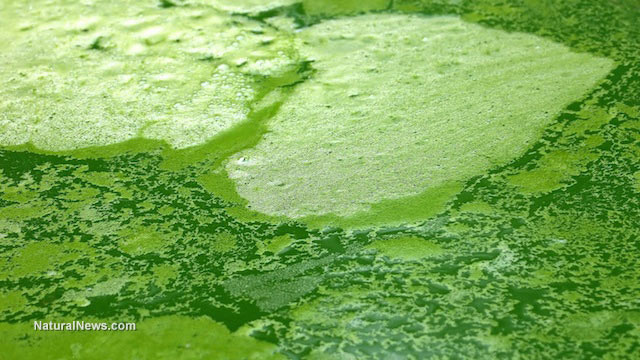It’s a simple chain of cause-and-effect: Toxic green algae in Florida is the result of man-made pollution
04/03/2019 / By Ralph Flores

An organism that has plagued Florida waters since 2017, bringing an assault of toxic green algae and red tide blooms, is finally disappearing, according to a report released by the Florida Fish and Wildlife Conservation Commission. The announcement was made a few weeks after marine scientists observed that Karenia brevis, the microscopic algae responsible for the harmful blooms, are no longer present in samples collected from different parts of the state.
While satellite photos still reveal red tide blooms in southwest Florida, the concentrations of K. brevis are still declining even in those areas, according to Vincent Lovko of Mote Marine Laboratory and Aquarium.
“We’ve seen a much-reduced number of cell count samples that have elevated Karenia brevis,” Lovko added in an NPR report. “That does seem to indicate that the bloom has largely dissipated.”
The report comes as a relief for those living on the Gulf Coast, especially in communities that have been hit the hardest by the red tide blooms. In particular, tourism in areas affected by the red tide has significantly declined over the past years because of the situation.
The usual suspects
Indeed, it is great news that the state is finally recovering from the disastrous effects brought about by these algal blooms. But if you’re looking for who’s responsible for this environmental disaster, it could either be anyone or no one – depending on who you’re asking.
According to the FWC and Mote, the two algae outbreaks that devastated that state aren’t linked to nutrient pollution. The Florida government, in their website for red tide monitoring, also echoed that no link exists between nutrient pollution and red tides caused by K. brevis.

A study made by the University of Maryland‘s Center for Environmental Studies, however, says that these two outbreaks are connected. In particular, K. brevis — the algae responsible for red tide outbreaks along the southwest coast — use the cyanobacteria in the blue-green algae outbreak as a food source. The latter is mainly caused by man-made pollution, especially from the following sources:
- Urea nitrogen from shore-based sewage spills and discharges
- Septic tanks that leak urea nitrogen, as well as those from lawn applications
- Cattle ranches, farms, and neighborhoods that release nitrogen and phosphorus into Lake Okeechobee
The end result is a chain reaction: Nitrogen- and phosphorus-rich runoffs feed the cyanobacteria in green-algae, which become fodder for the red tide-causing K. brevis. (Related: Florida battling dual ecological disasters … What aren’t they telling residents about the connection between the toxic green algae and red tides?)
How it affects humans and the environment
Red tide blooms are notoriously harmful to marine life, as K. brevis contain brevetoxins that can harm the nervous system of those that feed on them. The toxins are potent enough to kill fish, seabirds, turtles, and even marine mammals. A person exposed to the harmful bloom will experience respiratory irritation – which includes wheezing, coughing, and shortness of breath – as well as irritation in the eyes, nose, and throat. People with severe or chronic respiratory conditions are advised to avoid getting near beaches with red tide blooms as it can lead to serious complications. If you have been swimming in waters infested by red tide, rinse thoroughly with fresh water.
Consuming shellfish from waters affected by red tide is also harmful, as these contain concentrated amounts of brevetoxins. If a person eats contaminated shellfish, he may experience neurotoxic shellfish poisoning, a condition marked by severe stomach problems and a tingling sensation in the fingers and toes.
Learn more about the dangers brought about by red tide blooms at Environ.news.
Sources include:
Submit a correction >>
Tagged Under:
This article may contain statements that reflect the opinion of the author





















